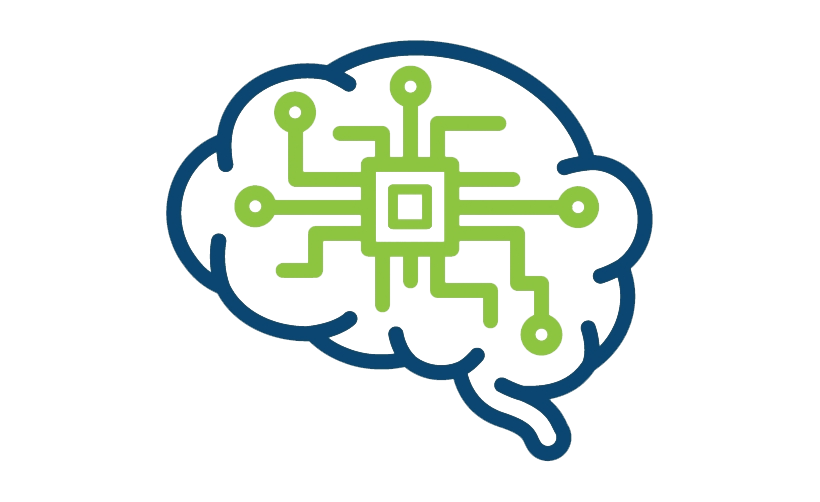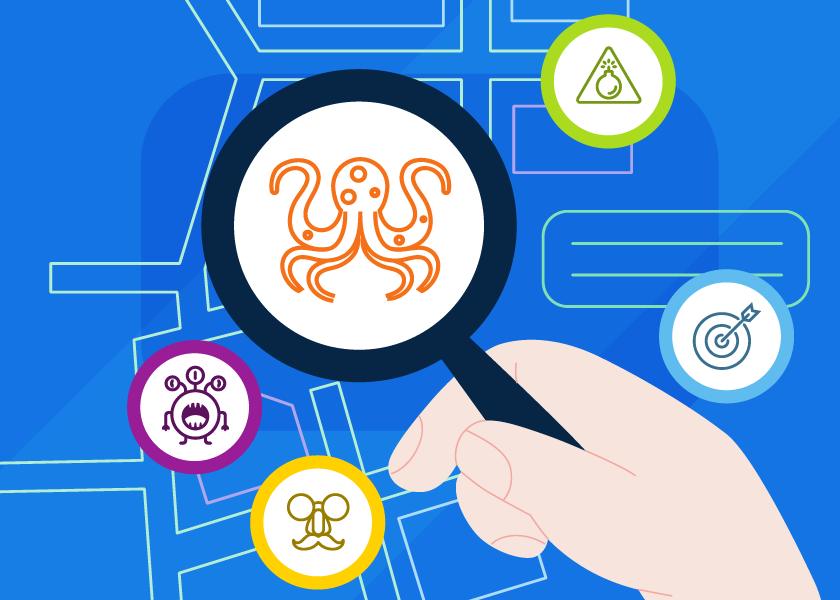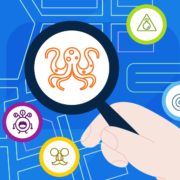Threat Hunting Services
proactive versus reactive Modify Your Cybersecurity Strategy for enhanced performance and heightened protection. High-fidelity Security Architecture for Detection of Advanced Threats.

No Compromise Active Threat Hunting: Identifying deep risks that lie inside the IT Ecosystem
Expanding digitalization has exposed enterprises to a variety of risks. Costs associated with failing to notice assaults include loss of consumer trust, possible intellectual property theft, and undesired fines for data security noncompliance. Conventional preventive security policies are insufficient for the current cyber threat scenario, resulting in poor visibility of cloud infrastructure, an inability to priorities risks, and the inability to execute action-oriented intelligence. Organizations are becoming aware of the necessity to seek for active, unknown risks inside their infrastructures.
Cyber Threat Hunting provides early threat detections and utilises high-fidelity telemetry and threat data to identify adversaries’ known/unknown actions and those infiltrating an organization’s systems and networks. With it, businesses can produce in-depth information for cyber threats in real-time, develop incident response plans for unknown attack patterns, cut operational expenses, and utilise cost-effective solutions for reduced training, maintenance, and deployment costs.
Cyber Threat Investigation using CDWT
Cyberattacks are increasingly inevitable, and companies are stymied in their efforts to triage warnings, investigate, and react to persistent threats. As the intensity and frequency of assaults increase, it becomes vital to conduct threat hunting.
In addition, building a cyber threat hunting programme may be complex and costly for firms that do threat hunting on a large scale. Organizations are forming partnerships with MSPs to get inexpensive resources and expertise. Utilize advanced understanding of dangers and clever data analytics with automated security technologies. Even while protecting high-value items, minimise human contact and de-stress security personnel. Keep ahead of your peers in terms of cybersecurity. With CDWT’s powerful cyber threat hunting service, you won’t have to worry about threats.
Adopt the Appropriate Threat Hunting Strategy
The Managed Threat Hunting services provided by CDWT allow enterprises to detect, identify, and eliminate sophisticated cyber threats. We mix sophisticated analytics tools with networks and endpoints to identify anomalous patterns/behavior and protect their infrastructure with the highest degree of agility, scalability, and the disruptive force of intelligent automation. Obtain AI-powered cloud security, on-premises security, and on-site security solutions and services to enhance business continuity and future-readiness.
Advantages of Changing from Traditional Hunting Services to Managed Threat Hunting Services
- Enhance your team's proficiency in sophisticated threat detection
- SIEM and Log Management Perspectives
- Automated Vulnerability Administration
- Risk and Compliance Administration
- Obtain Leading-Edge Intelligence
- Introduce SOC to the Future












Models for Threat Hunting
Intel Based Hunting
Intel-based hunting is a reactive form of hunting that employs Indicators of Compromise (IoCs) from threat intelligence sources. Intelligence-based searches may use indicators of compromise, hash values, IP addresses, domain names, networks, or host artefacts supplied by intelligence-sharing services. A threat warning generated by these platforms is exported to the SIEM as an input. Once the SIEM has generated an alert based on IoC, threat hunters may investigate malicious activities before and after the warning to identify any system breach.
Hypothesis Hunting
The proactive hunting approach of hypothesis hunting employs a threat hunting library. It is associated with the MITRE ATT&CK methodology and using hypothesis-based hunts to identify the attackers' Indicators of Attack (IoAs) and Tactics, Techniques, and Procedures (TTPs). The threat hunter finds threat actors based on environment, domain, and attack patterns in order to produce an MITRE-aligned hypothesis. After recognising the behaviour pattern, the danger hunter investigates activity patterns to detect, identify, and isolate the threat.
Custom Hunting
The success of a custom hunt hinges on situational awareness and industry-standard hunting techniques. It identifies abnormalities in SIEM and EDR tools and is adaptable to client specifications. Customized or situational hunts are conducted under specific circumstances, such as geopolitical issues and targeted assaults, or depending on the needs of the consumer. In these hunting activities, both intelligence- and hypothesis-based hunting models using IoA and IoC data may be used.
Mapping the Framework for Threat Hunting
Phase 01: Trigger
-
Threat Hunting is a focused, resource-intensive approach. The hunter gathers environmental data and creates theories on possible security weaknesses. The hunter then chooses a trigger to examine a particular system, network section, or hypothesis.
-
Phase 02: Investigation
-
After identifying a trigger, the search focuses on locating anomalies that either support or refute the hypothesis. During this phase, threat hunters examine malicious abnormalities using a number of technologies.
-
Phase 03: Resolution
-
Threat hunters collect all pertinent data throughout the investigation phase. During the resolution phase, this information is shared with other teams who use the appropriate tools to react, prioritise, analyse, or store the data for future use.
-
Regardless of whether the material pertains to legal or illegal behaviour, it is useful for future studies and investigations. It may be used to enhance security measures, prioritise and address vulnerabilities, and predict developing threat patterns or behaviours.
-
CDWT's Threat Hunting Services encourage vigilance in the face of next-generation threats and vulnerabilities.
- Threat Monitoring
- Ingestion of Data and Telemetry
- Intelligent Threat Hunting, Research, and Detection
- In-Depth Incident Analysis
- Security Response Automation and Threat Mitigation
- Security at the endpoint with managed endpoint detection and response (EDR)
Obtain deep threat monitoring of the IT stacks, including people, devices, apps, networks, servers, data and datacenter assets, cloud platforms, and endpoint environments, 24 hours per day, seven days each week.
Gain automatic alert management and optimization (to decrease alert fatigue), as well as insight into the risk posture of the whole company.
Integrate MDR suite with mission-critical, high-fidelity internal and external dataflows from all IT landscape segments.
MDR facilitates data intake and monitoring from internal networks and IT infrastructure, devices, platforms, and external landscapes, cloud platforms, remote IT architectures, and third-party service providers.
Integrates threat information for threat research, discovery, and hunting, while identifying risks lying behind the most basic perimeter layers or concealed from ordinary rule-based assessments.
Using Advanced Threat Protection, analyse benign code to detect new dangers and assure preventative maintenance. Prepare for improved managed detection, endpoint detection, and incident response for similar or other situations.
Using advanced security analytics, automatically classify threats, risky use cases, and threat monitoring and hunting into appropriate event categories. Helps create an advanced incident response strategy.
Categorize warnings, prevent alert fatigue, and support the Security Response Team in gaining sophisticated, real-time threat intelligence to make educated decisions.
Intelligent automation solutions may reduce Mean Time to Detect and Mean Time to Repair for end-to-end IT assets.
Automatically halt the harmful software's operation and undertake a thorough examination of its repair.
Aviall a collaborative threat mitigation action mechanism between the CSIRT/SOC of the supplier and the security team of the customer.
Integrate next-generation antiviral capabilities with additional cognitive tools for real-time anomaly detection and alerting, forensic investigation, and endpoint cleanup.
Track the execution and modification of files, changes to the registry, network connections, and binary execution across your endpoints.
- Advanced Security Operation Center (SOC) Management Services
- Cybersecurity Evaluation
- Compliance and Security-as-a-Service
- Solution for Intelligence on Danger
- Monitoring and Protection of the Dark Web
Cybersecurity Incident and Response Team (CSIRT) of CDWT provides threat monitoring and management and aids in the adoption of innovative cybersecurity frameworks, incident response plans, and intelligent solutions.
Receive assistance from world-class security experts with IAM, SEM, ATP, Root Cause Analysis, Compliance Audits, and Advanced Penetration Testing services.
Provide strategic advice to better monitor and manage on-premises or cloud-based organisational security.
Obtain continuous monitoring of assets, resources, access control review, and compliance audits for enhanced data protection, as well as advice services for misconfigured networking-server assets.
Compliant-ready services provided by CDWT guarantee that client facilities comply with data localization-residency laws, national regulations, local compliances, secure identity compliance, and international certifications.
Adopt cloud-native solutions for complete compliance monitoring and management, hardware-based key storage for regulatory compliance, and governance-auditing-risk reduction.
Sophisticated security intelligence solutions from CDWT include advanced threat hunting, data forensics, anomaly detection, and automated response management.
Adopt AI-powered cybersecurity for end-to-end asset management and monitoring, including last-mile connectivity and end device security.
Utilize the Self-Healing or Preventive Maintenance Platform to consolidate cybersecurity management for IP/Domain Reputation, File Reputation, and IT assets (SHOP).
With CDWT Dark Web Monitoring and Protection, you can monitor corporate data and get fast warnings of any online dangers. Take urgent action and enhance the security of your business.
Dark Web Scan does a search for stolen usernames, passwords, social security numbers, and credit card data available for sale.
Dark Web Monitoring aids in the monitoring of large-scale operations and establishes a safety net. Dark Web Protection detects identity theft, protects data loss, and analyses malware.
Why Adopt CDWT Threat Hunting Services?
Why Should Your Enterprise Partner with CDWT for Cybersecurity Transformation?
The world's biggest Application-focused Managed Cloud Services Provider and a leader in managed cybersecurity. Dedicated security evaluation services.
12+ years of service to 4000+ corporations, including 60+ Fortune 500 companies, in 25+ countries spanning the Americas, Europe, Middle East, and APAC.
More than 40 Security Controls, twenty Centres of Excellence, and two thousand worldwide cloud specialists
Pre-met compliance demands for local, national, and international compliance regulations, such as IRAP, GDPR, HIPAA, SAMA, CSA, GXP, and ISO Certifications.
3200 UTMs, 13000 HBSS, 800000 EPS
Seven Security frameworks using the MITRE ATT&CK, CIS Critical Security Controls, and more
Comprehensive 24x7 monitoring of cyber security
Advanced Managed Detection and Response Solutions Automated Security Solutions for threat prediction, detection, and response (MDR)
Expertise in managed SOC (Security Operations Center) services and solutions on a global scale.
DevSecOps-specific portfolio
Cybersecurity Consulting, Cybersecurity Assessment, and Audit Reporting Services for the Entire IT Stack and Cloud Infrastructure.
Advanced Cybersecurity Incident and Response Team (CSIRT) for CDWT
Threat Intelligence powered by Industry-leading platforms such as Microsoft, OSINT, STIX&TAXI, MISP, etc. and CDWT Threat experts
Considerable threat management knowledge in protecting big and complex settings and using the sophisticated features of industry-leading technologies and Cloud-Native Security products.
Expertise in building and administering comprehensive SIEM - assisting organisations in proactively assessing vulnerabilities and automating and accelerating incident response.
Cybersecurity Threat Hunting – FAQ’s
By detecting security events and reporting holes in threat visibility and coverage, threat hunting aids businesses in protecting their important assets and reputations.
Methodology
Enterprises must use a proactive, comprehensive, and ever-evolving strategy to detect harmful activity and unexpected network traffic.
Technology
Enterprises have extensive endpoint security solutions. To locate abnormalities, strange patterns, and other indications of intruders, threat hunting necessitates extra technologies. Advanced technologies provide a better and more comprehensive view of harmful behaviour.
Skilled Experts
Threat hunters, also known as cybersecurity threat analysts, use security technology and intuitive problem-solving forensics to uncover and neutralise hidden risks.
Intelligence Regarding Threats
Access to global evidence-based intelligence facilitates and accelerates the threat search. To concentrate on harmful occurrences, hunters get information on attack classes for malware and threat group identification.





